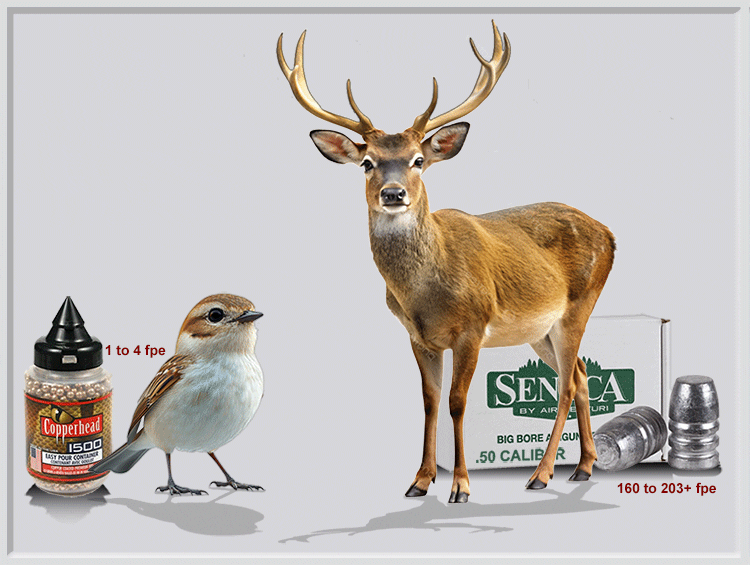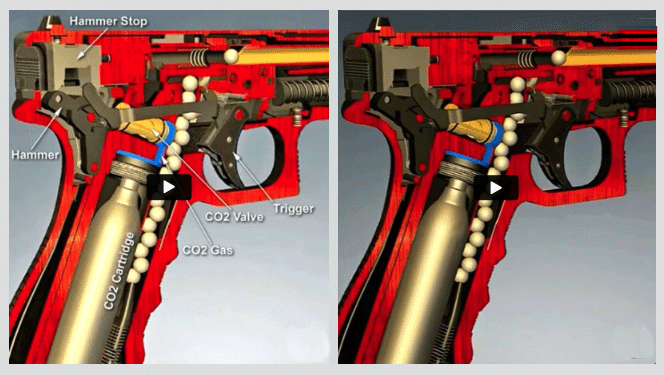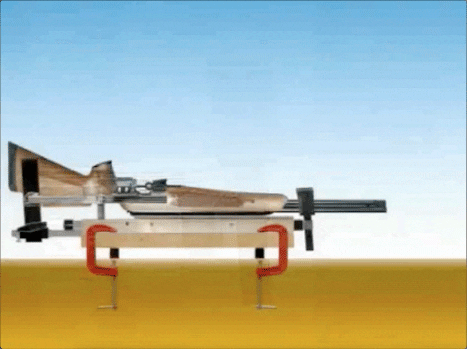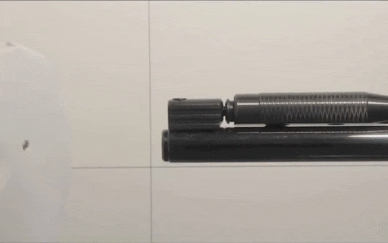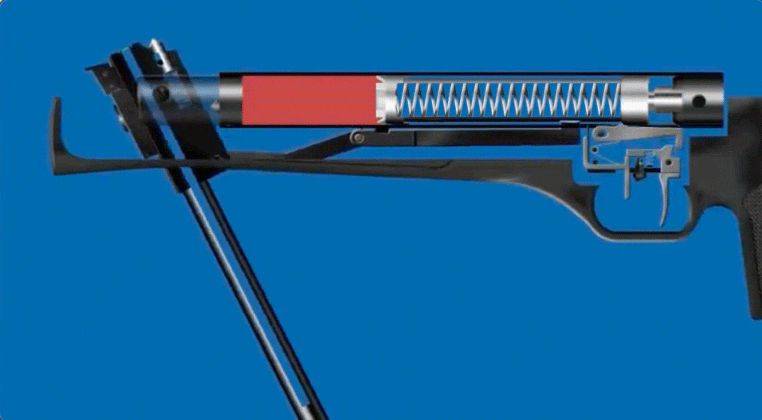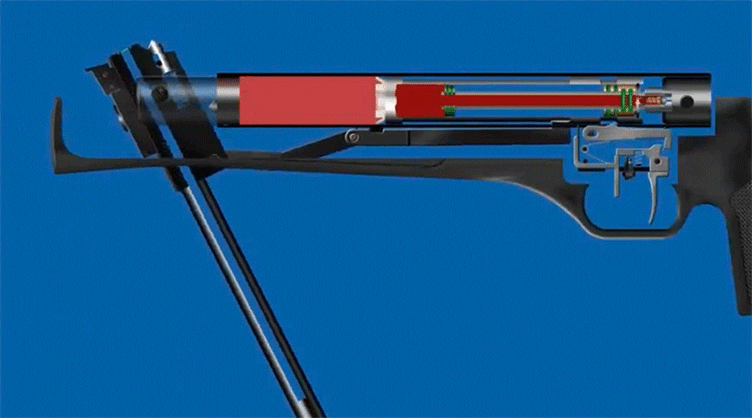Three Basic Types of Air Guns
So to start you in the right direction, let us take a look at the three basic types of air guns. To keep things simple, we will talk about fixed power air guns as opposed to variable or adjustable power air guns. I will talk about those later.
First, there is the spring-action or break-barrel air gun. To achieve power, a heavy spring is compressed to a locking point and when released by the trigger air is compressed in a chamber directly behind the pellet pushing the pellet forward out of the gun barrel towards the target. In many cases the cocking is done by the barrel itself being the cocking lever, but side levers and under levers are common as well allowing the barrel to stay fixed. As a rule, the harder the cocking effort, the higher the power factor. I would rate the spring-action pellet gun somewhere around 6 to 7 on the power spectrum depending upon the caliber and weight of the pellet.
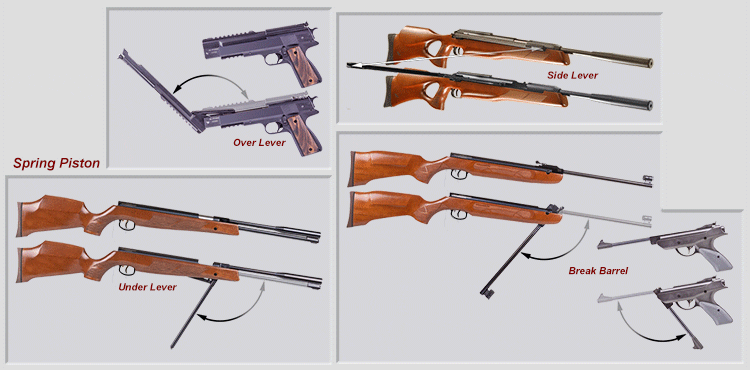
Next is the Pre-charged Pneumatic or PCP as it is commonly referred to. These air guns receive their power by being filled from a tank like a scuba tank or a high pressure hand pump. An airline is connected to the gun from the tank or pump and the reservoir on the gun is filled to approximately 3,000 psi. When the trigger is pulled, the hammer strikes a valve allowing a burst of compressed air to propel the pellet out of the barrel towards its destination. Again, the rule of thumb being; the higher the pressure, the higher the power. There are 2,000-psi PCP models appearing on the market but again, air pressure equals power. I would rate the PCP at a strong 8 to 10 on the power spectrum depending upon the caliber and weight of the pellet.

Last but not least is the CO2 powered air gun. Similar to a PCP in that pulling the trigger opens a valve allowing a burst of CO2 gas to propel the pellet, the CO2 air gun has about half of the power of a PCP. While the CO2 air gun has a simpler system of introducing power into the gun, the power must be purchased in the form of powerlets as opposed to “free” air. Powerlets come in two flavors: 12 gram and 88 gram and are easily accessible particularly in the 12-gram size. Convenient but less powerful, I would rate the CO2 air gun at 3 to 5 on the power spectrum depending upon the caliber and weight of the pellet.

Three Basic Types of Air Guns
So to start you in the right direction, let us take a look at the three basic types of air guns. To keep things simple, we will talk about fixed power air guns as opposed to variable or adjustable power air guns. I will talk about those later.
First, there is the spring-action or break-barrel air gun. To achieve power, a heavy spring is compressed to a locking point and when released by the trigger air is compressed in a chamber directly behind the pellet pushing the pellet forward out of the gun barrel towards the target. In many cases the cocking is done by the barrel itself being the cocking lever, but side levers and under levers are common as well allowing the barrel to stay fixed. As a rule, the harder the cocking effort, the higher the power factor. I would rate the spring-action pellet gun somewhere around 6 to 7 on the power spectrum depending upon the caliber and weight of the pellet.
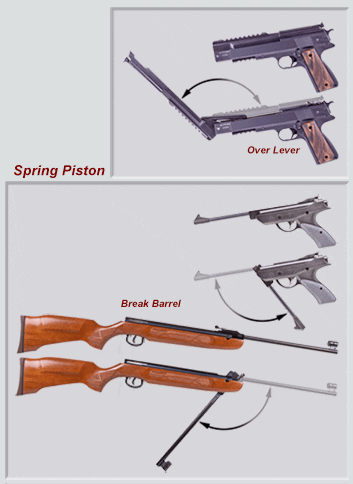
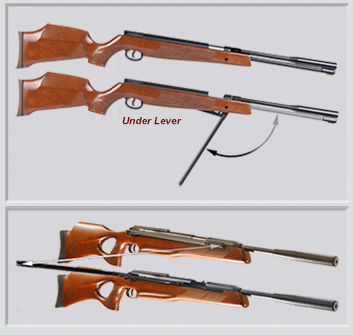
Next is the Pre-charged Pneumatic or PCP as it is commonly referred to. These air guns receive their power by being filled from a tank like a scuba tank or a high pressure hand pump. An airline is connected to the gun from the tank or pump and the reservoir on the gun is filled to approximately 3,000 psi. When the trigger is pulled, the hammer strikes a valve allowing a burst of compressed air to propel the pellet out of the barrel towards its destination. Again, the rule of thumb being; the higher the pressure, the higher the power. There are 2,000-psi PCP models appearing on the market but again, air pressure equals power. I would rate the PCP at a strong 8 to 10 on the power spectrum depending upon the caliber and weight of the pellet.
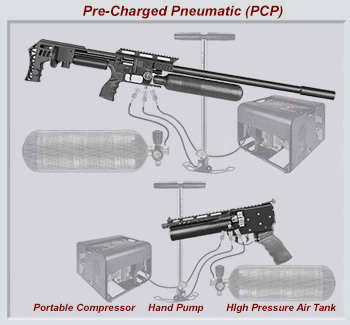
Last but not least is the CO2 powered air gun. Similar to a PCP in that pulling the trigger opens a valve allowing a burst of CO2 gas to propel the pellet, the CO2 air gun has about half of the power of a PCP. While the CO2 air gun has a simpler system of introducing power into the gun, the power must be purchased in the form of powerlets as opposed to “free” air. Powerlets come in two flavors: 12 gram and 88 gram and are easily accessible particularly in the 12-gram size. Convenient but less powerful, I would rate the CO2 air gun at 3 to 5 on the power spectrum depending upon the caliber and weight of the pellet.




